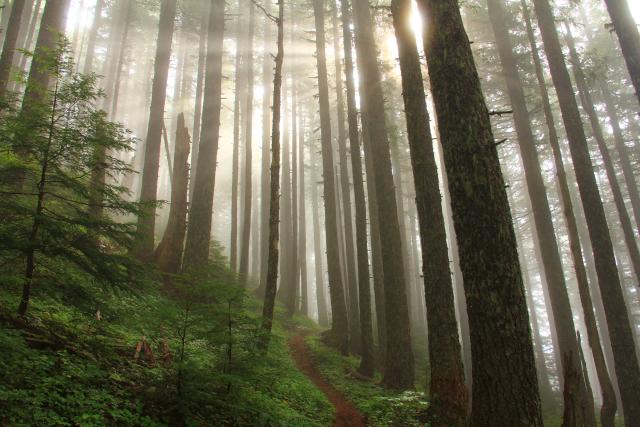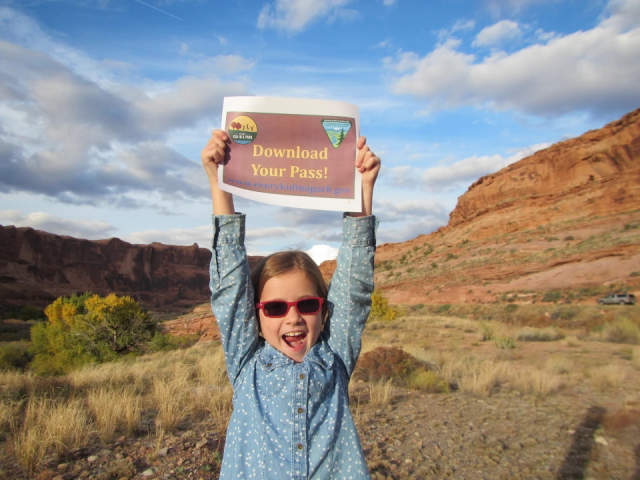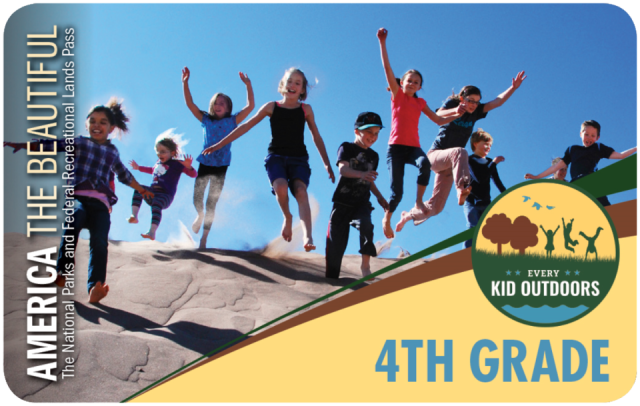You are viewing ARCHIVED content published online before January 20, 2025. Please note that this content is NOT UPDATED, and links may not work. Additionally, any previously issued diversity, equity, inclusion or gender-related guidance on this webpage should be considered rescinded. For current information, visit https://www.blm.gov/blog.
Improving mental health by visiting your public lands
Ever been late because you’re stuck in traffic? Or stressed out because you have a project due and it seems impossible, or you or a family member has health issues or money issues? Do you feel your anxiety creeping up just thinking about it?
Stressing out releases cortisol, a hormone that raises your blood pressure and heart rate. Chronic stress is linked to anxiety, depression, heart disease, obesity, and other negative health outcomes. Positive experiences in nature can improve mental health, increase creativity, decrease anxiety, and lower cortisol levels—all of which help reduce the risks from poor mental and physical health. In 2023, the U.S. Congressional Joint Economic Committee released a report touting the important role public lands play in improving Americans’ mental health.
Shinrin-yoku, or forest bathing, offers a positive experience in nature. This Japanese practice emerged in the 1980s and 1990s, after researchers proved that being immersed in nature is good for our mental and physical health. Forest bathing is bathing in the forest atmosphere—connecting with the environment through our sight, hearing, smell, taste, touch, and state of mind.

Anyone can partake in forest bathing, regardless of fitness level or ability. Find a place, an activity, and the weather that suits you—sit, stroll, paint, take photos, fish, sing. There’s no wrong way to forest bathe, as long as you slow down and are present and relaxed.
Desert bathing is the same concept, but without the forest! While studies show that blues (skies and water) and greens (vegetation) promote relaxation and calm, the color brown (desert landscapes) is associated with resilience, safety, security, and feeling grounded. Whether you prefer forest or desert bathing, simply disconnect from your devices, be present, and breathe.

The Americans with Disabilities Act defines a disability as a physical or mental impairment that substantially limits one or more major life activities. When a mental health condition meets these criteria, it’s considered to be a disability. At least one in five adults in the United States live with a mental illness (57.8 million in 2021) and 49.5% of adolescents aged 13-18 had a mental disorder (National Institute of Mental Health). Anxiety, depression, bipolar disorder, post-traumatic stress disorder, and behavioral and emotional disorders are some of the more common mental illnesses in children.
May is Mental Health Awareness Month. Promoting mental health is important all year, but this month let’s take a moment to raise awareness about mental illness, its prevalence, its impacts on people of all ages and backgrounds, and what we can do to help.
Spending time in nature helps children and teens connect with themselves, become more emotionally resilient, and better understand how they connect with a bigger picture of the ecosystem and the world around them.
A 2020 report on nature and mental health from Yale University describes how exposing children and teens to nature helps improve their cognitive function, resilience to stress, emotional regulation, attention span, imagination, and creativity. It also helps with development of motor, communication, and decision-making skills. As with adults, evidence shows that getting kids back outdoors could modestly help reverse the downward trend of mental health.
“Of course we’re well aware of mental health issues for youth, and have several initiatives in progress,” says Mike Brown, National Youth Programs Lead.
The BLM is partnering with the Youth Conservation Corps to promote care for the land and prioritize the health and well-being of our youths. As those programs are put in place, the BLM and six other Federal agencies, including the National Park Service and U.S. Forest Service, offer a program called Every Kid Outdoors.

Photo Credit: Courtesy, BLM Division of Education, Cultural, and Paleontological Resources.
This program, which began in 2015, gives children in 4th grade and their families free access to more than 2,000 sites across the country. The pass is valid September 1 to August 31 each year. To find out more, go to EveryKidOutdoors.gov. If you’re in 4th grade, simply complete a short activity and print out the voucher. Fourth-grade teachers can do it for their entire class!
Why is it only for 4th graders? Research shows that children ages 9-11 are at a unique developmental stage where they’re beginning to understand how they fit into the world around them. They’re open to new ideas and can deepen their connection to nature with their families. It’s also a good time to teach them to use nature to calm themselves.

Cultural, and Paleontological Resources.
“I’ve seen the benefits for these kids! Being outside eases their anxiety and depression,” observed Molly Allen, Environmental Education Specialist for the Butte Falls Field Office in Oregon.
Allen should know—she led the program last year during a detail to Headquarters and continues to advocate for it to the local 4th graders.
Which activity will you do to support your mental health—stroll through a forest, bike across arid mesas to a secluded spot, fish from an accessible pier in your wheelchair, or explore new places with your 4th grader?
Cathy Humphrey, Project Manager, Experienced Services Program
Related Stories
- BLM recreation sites available to all: Exploring accessibility on California’s public lands
- A day on patrol with BLM Arizona Ranger Rocco Jackson
- Overcoming challenges to move the BLM forward: Nikki Haskett
- BLM recreation sites available to all: Exploring accessibility on Arizona’s public lands
- Steer clear of muddy roads and trails this spring
